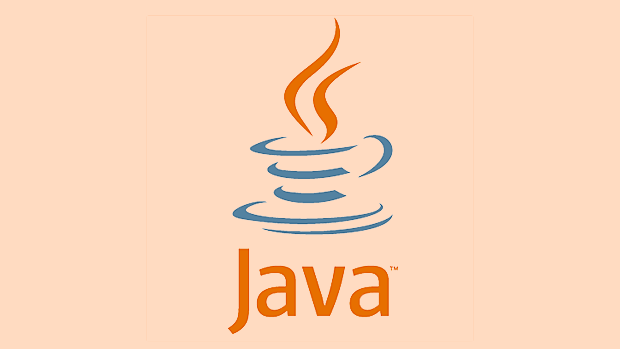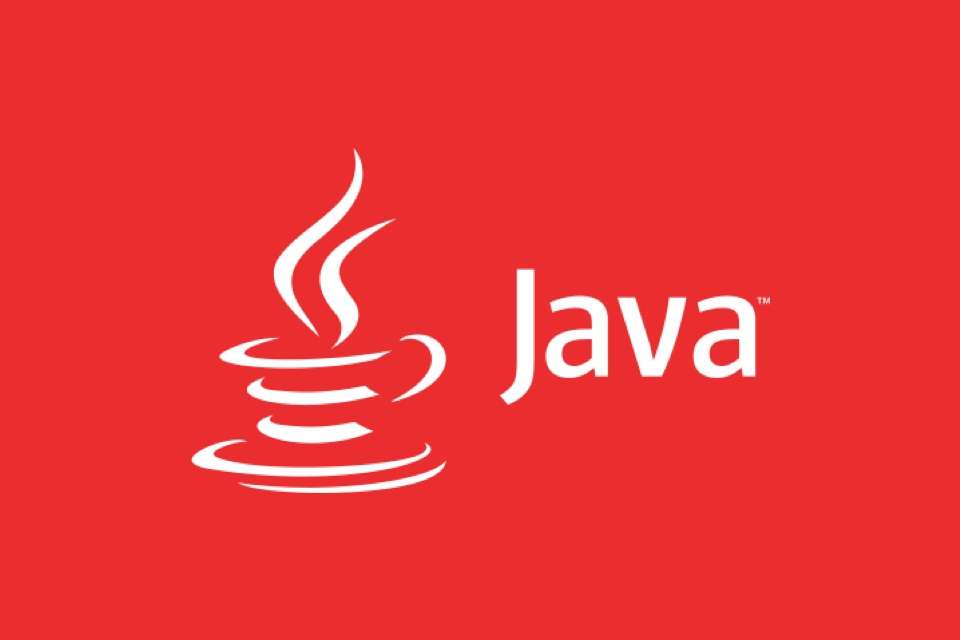Benchmarking Java Code with JMH (Java Microbenchmark Harness)
Jul 27, 2025 am 02:40 AMThe reason why the JVM optimization mechanism (such as dead code elimination, JIT compilation) will cause the result to be distorted; 1. Use JMH to add jmh-core and jmh-generator-annprocess dependencies; 2. Use @Benchmark annotation to mark the test method and use Blackhole to prevent the results from being optimized; 3. Use @BenchmarkMode, @Warmup, @Measurement, @Fork, @State and other annotations to reasonably configure the test environment; 4. Start JMH through the main method during runtime to avoid manual loop testing to ensure that the results are accurate and trustworthy.

Using JMH (Java Microbenchmark Harness) to benchmark Java code is a standard way to accurately measure the performance of small code. Many people directly use System.currentTimeMillis() or simple loop to test performance, but this method is easily affected by JVM optimization mechanisms such as JIT compilation, GC, CPU warm-up, and code reordering, resulting in severe distortion of the results. JMH was born to solve these problems.

Why can't you hand-written benchmarks?
JVM is not a simple interpreter, it has optimizations such as JIT compilation, method inline, escape analysis, dead code elimination, etc. For example:
long start = System.nanoTime();
for (int i = 0; i < 1000; i ) {
someMethod();
}
long end = System.nanoTime(); The JVM may find that the result of someMethod() is not used, and it directly optimizes the entire loop (dead code eliminates), resulting in the time-consuming measurement of 0. This kind of "fake" is meaningless.

How to use JMH correctly?
1. Adding JMH dependencies (Maven example)
<dependency>
<groupId>org.openjdk.jmh</groupId>
<artifactId>jmh-core</artifactId>
<version>1.37</version>
</dependency>
<dependency>
<groupId>org.openjdk.jmh</groupId>
<artifactId>jmh-generator-annprocess</artifactId>
<version>1.37</version>
<scope>provided</scope>
</dependency>2. Create a benchmark test class
@Benchmark
public void testStringConcat(Blackhole blackhole) {
String s = "";
for (int i = 0; i < 10; i ) {
s = "a";
}
blackhole.consume(s); // Prevent it from being optimized}
@Benchmark
public void testStringBuilder() {
StringBuilder sb = new StringBuilder();
for (int i = 0; i < 10; i ) {
sb.append("a");
}
sb.toString();
}Key points:
- Use
@Benchmarkannotation to mark the test method. - Use
Blackholeto prevent the results from being optimized by JIT (especially when the return value or intermediate variable is not used). - The method must be
public, otherwise JMH cannot be accessed.
3. Add reasonable annotations to control test behavior
@BenchmarkMode(Mode.AverageTime)
@OutputTimeUnit(TimeUnit.NANOSECONDS)
@Warmup(iterations = 3, time = 1, timeUnit = TimeUnit.SECONDS)
@Measurement(iterations = 5, time = 1, timeUnit = TimeUnit.SECONDS)
@Fork(1)
@State(Scope.Thread)
public class StringConcatBenchmark {
// The test method is written here}illustrate:

-
@BenchmarkMode: Test the average time (AverageTime), throughput (Throughput), etc. -
@Warmup: Warm up the rounds, allowing JIT to fully optimize the code. -
@Measurement: Actual measurement rounds. -
@Fork(1): Each time you test fork a new JVM process to avoid mutual interference. -
@State(Scope.Thread): Indicates the scope of the test state to avoid inter-thread interference.
4. Run the benchmark test
Write a main method to start:
public class JmhRunner {
public static void main(String[] args) throws Exception {
org.openjdk.jmh.Main.main(args);
}
}Then run:
mvn clean install java -cp target/benchmarks.jar com.example.StringConcatBenchmark
Or run the main method directly in the IDE (make sure the JMH class has been generated).
Common Traps and Best Practices
- ?Don't manually write
forloops to measure performance : JMH has helped you control the number of iterations and measurement logic. - ? Use
Blackholeto consume results : prevent useless code from being optimized. - ? Avoid doing too heavy operations in
@Setup: unless it is the test initialization overhead. - ? Pay attention to whether Warmup is sufficient : JIT compilation takes time, and insufficient warm-up will lead to slow results.
- ? Get stable values after multiple runs : Performance may be affected by system load, and multiple tests are recommended.
Sample output interpretation
Benchmark Mode Cnt Score Error Units StringConcatBenchmark.testStringConcat avgt 5 482.3 ± 12.7 ns/op StringConcatBenchmark.testStringBuilder avgt 5 32.1 ± 1.3 ns/op
-
avgt: Average time consumption -
ns/op: nanoseconds per operation -
Score: Average,Error: Error range
It can be seen StringBuilder is an order of magnitude faster than string splicing.
Basically that's it. The core value of JMH is to help you avoid the "traps" of JVM and get data that truly reflects performance. As long as you write according to the specifications, the results will be credible. Not complicated, but it is easy to ignore details.
The above is the detailed content of Benchmarking Java Code with JMH (Java Microbenchmark Harness). For more information, please follow other related articles on the PHP Chinese website!

Hot AI Tools

Undress AI Tool
Undress images for free

Undresser.AI Undress
AI-powered app for creating realistic nude photos

AI Clothes Remover
Online AI tool for removing clothes from photos.

Clothoff.io
AI clothes remover

Video Face Swap
Swap faces in any video effortlessly with our completely free AI face swap tool!

Hot Article

Hot Tools

Notepad++7.3.1
Easy-to-use and free code editor

SublimeText3 Chinese version
Chinese version, very easy to use

Zend Studio 13.0.1
Powerful PHP integrated development environment

Dreamweaver CS6
Visual web development tools

SublimeText3 Mac version
God-level code editing software (SublimeText3)
 Asynchronous Programming Techniques in Modern Java
Jul 07, 2025 am 02:24 AM
Asynchronous Programming Techniques in Modern Java
Jul 07, 2025 am 02:24 AM
Java supports asynchronous programming including the use of CompletableFuture, responsive streams (such as ProjectReactor), and virtual threads in Java19. 1.CompletableFuture improves code readability and maintenance through chain calls, and supports task orchestration and exception handling; 2. ProjectReactor provides Mono and Flux types to implement responsive programming, with backpressure mechanism and rich operators; 3. Virtual threads reduce concurrency costs, are suitable for I/O-intensive tasks, and are lighter and easier to expand than traditional platform threads. Each method has applicable scenarios, and appropriate tools should be selected according to your needs and mixed models should be avoided to maintain simplicity
 Best Practices for Using Enums in Java
Jul 07, 2025 am 02:35 AM
Best Practices for Using Enums in Java
Jul 07, 2025 am 02:35 AM
In Java, enums are suitable for representing fixed constant sets. Best practices include: 1. Use enum to represent fixed state or options to improve type safety and readability; 2. Add properties and methods to enums to enhance flexibility, such as defining fields, constructors, helper methods, etc.; 3. Use EnumMap and EnumSet to improve performance and type safety because they are more efficient based on arrays; 4. Avoid abuse of enums, such as dynamic values, frequent changes or complex logic scenarios, which should be replaced by other methods. Correct use of enum can improve code quality and reduce errors, but you need to pay attention to its applicable boundaries.
 Understanding Java NIO and Its Advantages
Jul 08, 2025 am 02:55 AM
Understanding Java NIO and Its Advantages
Jul 08, 2025 am 02:55 AM
JavaNIO is a new IOAPI introduced by Java 1.4. 1) is aimed at buffers and channels, 2) contains Buffer, Channel and Selector core components, 3) supports non-blocking mode, and 4) handles concurrent connections more efficiently than traditional IO. Its advantages are reflected in: 1) Non-blocking IO reduces thread overhead, 2) Buffer improves data transmission efficiency, 3) Selector realizes multiplexing, and 4) Memory mapping speeds up file reading and writing. Note when using: 1) The flip/clear operation of the Buffer is easy to be confused, 2) Incomplete data needs to be processed manually without blocking, 3) Selector registration must be canceled in time, 4) NIO is not suitable for all scenarios.
 How Java ClassLoaders Work Internally
Jul 06, 2025 am 02:53 AM
How Java ClassLoaders Work Internally
Jul 06, 2025 am 02:53 AM
Java's class loading mechanism is implemented through ClassLoader, and its core workflow is divided into three stages: loading, linking and initialization. During the loading phase, ClassLoader dynamically reads the bytecode of the class and creates Class objects; links include verifying the correctness of the class, allocating memory to static variables, and parsing symbol references; initialization performs static code blocks and static variable assignments. Class loading adopts the parent delegation model, and prioritizes the parent class loader to find classes, and try Bootstrap, Extension, and ApplicationClassLoader in turn to ensure that the core class library is safe and avoids duplicate loading. Developers can customize ClassLoader, such as URLClassL
 Handling Common Java Exceptions Effectively
Jul 05, 2025 am 02:35 AM
Handling Common Java Exceptions Effectively
Jul 05, 2025 am 02:35 AM
The key to Java exception handling is to distinguish between checked and unchecked exceptions and use try-catch, finally and logging reasonably. 1. Checked exceptions such as IOException need to be forced to handle, which is suitable for expected external problems; 2. Unchecked exceptions such as NullPointerException are usually caused by program logic errors and are runtime errors; 3. When catching exceptions, they should be specific and clear to avoid general capture of Exception; 4. It is recommended to use try-with-resources to automatically close resources to reduce manual cleaning of code; 5. In exception handling, detailed information should be recorded in combination with log frameworks to facilitate later
 How does a HashMap work internally in Java?
Jul 15, 2025 am 03:10 AM
How does a HashMap work internally in Java?
Jul 15, 2025 am 03:10 AM
HashMap implements key-value pair storage through hash tables in Java, and its core lies in quickly positioning data locations. 1. First use the hashCode() method of the key to generate a hash value and convert it into an array index through bit operations; 2. Different objects may generate the same hash value, resulting in conflicts. At this time, the node is mounted in the form of a linked list. After JDK8, the linked list is too long (default length 8) and it will be converted to a red and black tree to improve efficiency; 3. When using a custom class as a key, the equals() and hashCode() methods must be rewritten; 4. HashMap dynamically expands capacity. When the number of elements exceeds the capacity and multiplies by the load factor (default 0.75), expand and rehash; 5. HashMap is not thread-safe, and Concu should be used in multithreaded
 Explained: Java Polymorphism in Object-Oriented Programming
Jul 05, 2025 am 02:52 AM
Explained: Java Polymorphism in Object-Oriented Programming
Jul 05, 2025 am 02:52 AM
Polymorphism is one of the core features of Java object-oriented programming. Its core lies in "one interface, multiple implementations". It implements a unified interface to handle the behavior of different objects through inheritance, method rewriting and upward transformation. 1. Polymorphism allows the parent class to refer to subclass objects, and the corresponding methods are called according to the actual object during runtime; 2. The implementation needs to meet the three conditions of inheritance relationship, method rewriting and upward transformation; 3. It is often used to uniformly handle different subclass objects, collection storage and framework design; 4. When used, only the methods defined by the parent class can be called. New methods added to subclasses need to be transformed downward and accessed, and pay attention to type safety.
 Effective Use of Java Enums and Best Practices
Jul 07, 2025 am 02:43 AM
Effective Use of Java Enums and Best Practices
Jul 07, 2025 am 02:43 AM
Java enumerations not only represent constants, but can also encapsulate behavior, carry data, and implement interfaces. 1. Enumeration is a class used to define fixed instances, such as week and state, which is safer than strings or integers; 2. It can carry data and methods, such as passing values ??through constructors and providing access methods; 3. It can use switch to handle different logics, with clear structure; 4. It can implement interfaces or abstract methods to make differentiated behaviors of different enumeration values; 5. Pay attention to avoid abuse, hard-code comparison, dependence on ordinal values, and reasonably naming and serialization.






